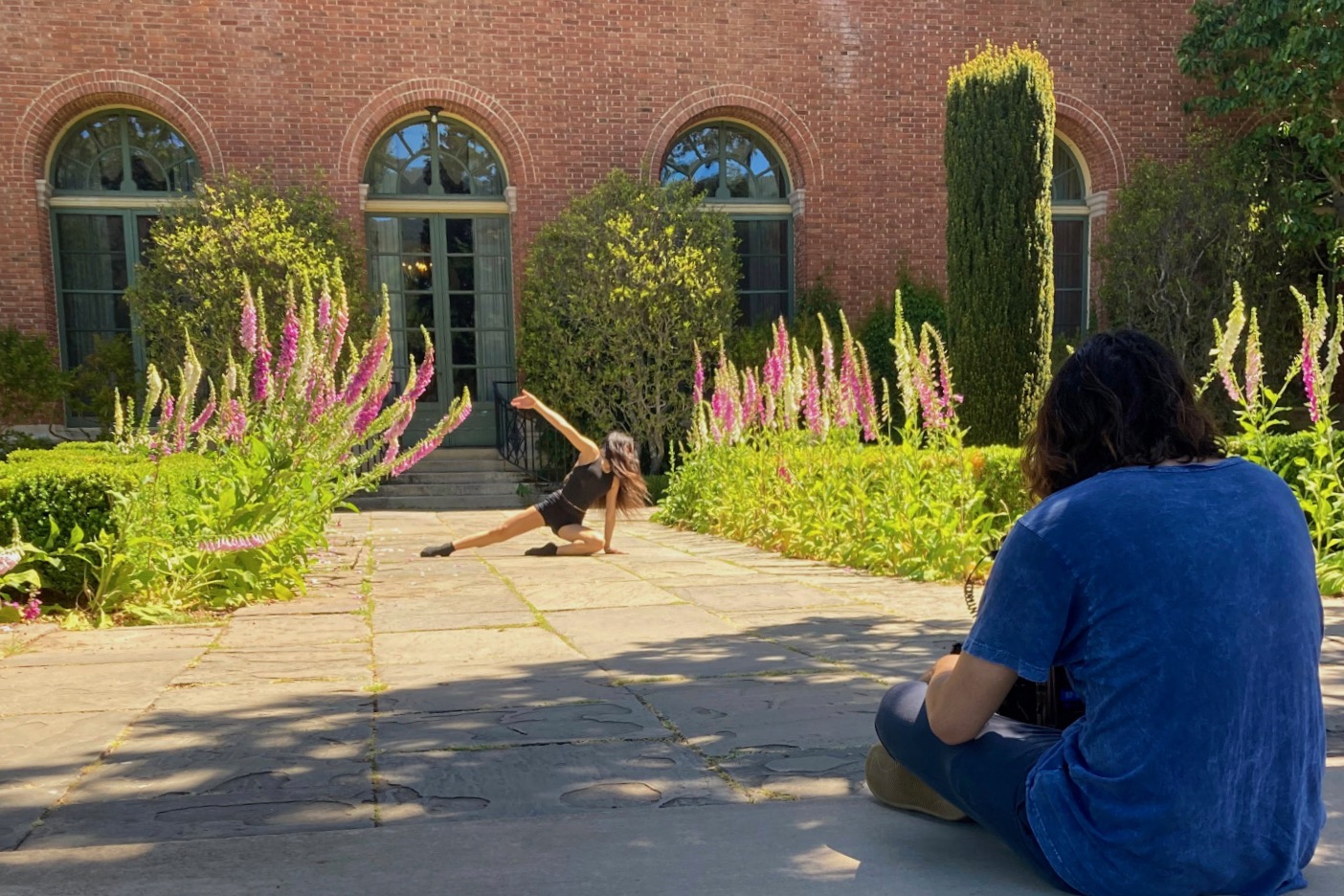Dancing begins as an escape — a joy sparked by rhythm and movement. But as ambition grows, so do the stakes. For many young dancers, the dream of going professional brings a whirlwind of challenges: financial risks, short-lived careers, and a culture fueled by pressure. The result? A constant tug-of-war between love for the art and the realities of the industry.
For many dancers, the question isn’t as simple as whether or not they want to pursue the art form as a career. The dance world, known for rigorous training and intense competition, often leaves students feeling confused about where they belong.
The debate
A career in dance may be appealing at first glance, but it comes with its drawbacks. Launching into a career right after high school means a dancer doesn’t get the chance to earn a college degree until after their career is over.
Furthermore, according to a study published in the Journal of Vocational Behavior, professional careers don’t often last longer than 20 years, and jobs may not always pay well. Dancers might find themselves at multiple other jobs or depending on others for financial support, according to a study on the role of psychological factors in dancers’ careers by Frontiers in Psychology.
Professional dancers have begun opening up about their salaries on social media platforms like TikTok and Instagram. Jasmine McDonald, a former professional with multiple international companies, shared that she was paid around $10,000 a year at one company she worked for, which was barely enough for her to pay for the essentials.
“One of the reasons that I left was because I simply could not afford my life there anymore. I’d had to ask my mom to help me; there were months where I could barely make ends meet,” McDonald said.
Professional dancers still struggle with income. According to the San Francisco Chronicle and NBC Bay Area, dancers at the San Francisco Ballet have begun to push for higher pay, with the dispute having threatened the annual performances of the Nutcracker.
According to the American Guild of Musical Artists, many dancers at San Francisco Ballet remain in the low-income threshold, though the mean hourly wage for dancers in California is the second-highest in the U.S., according to the U.S. Bureau of Labor Statistics.
Willow Harbin, a junior who has debated going pro, has her own concerns about finances and career length in the industry.
“There are so many risks dancing professionally,” Harbin said. “If you get injured, you’re screwed. It’s already not a well-paying job unless you have amazing connections.”
Growing up in the competitive dance world
Many start in recreational classes before being called up to join competition teams. One or two hours a week jumps to 10 or more as the dancer has to learn how to manage their time.
The competition world isn’t easy. Many find themselves burning out due to constant pressure from parents and teachers. Now a teacher and choreographer at various studios, Victoria Himes recalled that many dancers she grew up with didn’t continue as an adult.
“I was probably one of a handful of dancers I knew who actually went on with dance after high school,” Himes said. “I think a lot of the time, it’s very parent and teacher-driven of pushing the student to do better even if that’s not what they want. But once they graduate and their parents and their teachers aren’t there, they’re like, ‘Well I’m going to go do something else, because now the people who were pressuring me aren’t around.’ So I think burnout is a huge issue.”
Himes also noted that the competition environment wasn’t always supportive or motivating.
“At my studio in high school, teachers would immediately come scream at us if we did something wrong on stage,” Himes said.
On a similar note, Harbin remembered being punished with extra conditioning and lectures from teachers.
“My teacher would get mad at us because she felt that we weren’t trying in class. Once she made us hold a plank for the last six minutes of class while she lectured us on how grateful we should be that our parents pay for class and that not trying our hardest was unacceptable,” Harbin said.
For junior Emma Hsieh, however, harsher teaching styles were helpful at times.
“My jazz teacher was the first teacher I had that really pushed me. At that point, I was also only a recreational dancer, too. But he made me want to do it. Even though he was harsh, he really pushed me to do better,” Hsieh said.
Himes also identified that a common thread among dancers is that it is impossible to stay motivated all the time.
“I think there are moments where pressure is high, if you do ever experience it, because every dancer does at some point, or questions ‘Should I even be involved in this?’ or ‘Should I even dance?’” Himes said.
Dance is also notorious for body image issues and disordered eating. According to a paper published in The Sport Journal, dancers place a lot of importance on how they look and perceive themselves to be overweight, engaging in disordered eating patterns though they lack the rationale for it. Dancers are also three times more likely to develop eating disorders compared to the general population, according to the National Library of Medicine.
“I see more inclusivity as I’m getting older, which makes me happy, but I definitely experienced, and have seen other dancers experience teachers getting really hyper-critical or saying that if you don’t have a certain body composition, you’re not going to be able to dance well,” Himes said.
Why dancers continue
However, many dancers who grew up in these environments still continued with the sport. Frontiers in Psychology also established that intrinsic motivation was enough to keep dancers going. Commitment, optimism, and self-belief were key characteristics for the success of the freelance dancers in the study.
According to Frontiers in Psychology as well as another study on commitment to dance by the American Psychological Association, dancing for enjoyment was also crucial for a dancer to stick with the sport.
Echoing this, Harbin noted that she enjoys the distraction dance provides.
“I enjoy it. It’s a way to get away from reality. It distracts me when I don’t want to face a problem,” Harbin said.
Himes also stressed the importance of dancing for yourself.
“I think the thing I always go back to is, if I weren’t making money from it, If I weren’t winning awards from it, if no one was seeing it, would I still do it? Like, if you improv in your room when nobody’s watching, you’re not going to take a video of it and post it; it’s simply just for you,” Himes said.
The final decision
Though both expressed commitment to dancing, Hsieh and Harbin do not want to enter the professional world.
“I feel like I never actually had the dream of going pro because I didn’t start dancing seriously till recently. And so I feel like I never even let myself think about it,” Hsieh said. “I don’t think I will do it professionally in the end, just because I feel like the path that I’m on right now is way more academic.”
Harbin considered dancing professionally more than Hsieh, but ultimately decided it wouldn’t be for her.
“Last year, I was actually considering dropping ensemble at school and going to some studio for like 20 hours a week. I was like, ‘I have three years to get really good, but do I want to do that?’ And I was like, ‘You know what? No,’” Harbin said.
Unlike Harbin, Hsieh feels that her path has been set for a while.
“I never let myself even think about going for it; academics were always, like, there was no other option. It was always going to be that,” Hsieh said.
Harbin expressed more concern about the intensity of the job.
“I think it would be cool, but it’s a lot of work. I don’t know if I could do that much of that type of work. It’s not that I don’t want to do the work, it’s that I don’t think my body would be able to handle that,” Harbin said. “My body’s already declining, already giving up.”
Hsieh, however, can see herself dancing for many years to come, even if it’s not professionally.
“More recently I realized that I feel like dance is really the only thing I’ll be okay with doing for the rest of my life,” Hsieh said. “Like, thinking about doing one thing for the rest of my life is absurd, except the only thing I can think of that I would enjoy for most of my life is probably dance.”
Even so, both felt that the realities of dancing professionally meant that any thoughts of pursuing it would stay at that.
“It’s more of a dream, if I’m being completely honest,” Harbin said.



